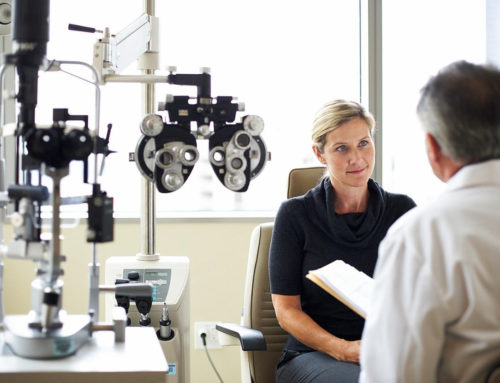
The ability of cataract surgery to restore sight is well known. People say they’re stunned by the vibrancy of color after surgery and the improvement in night vision. Some can even reduce their reliance on glasses. But can you quantify that improved quality of vision? To find out, researchers used a driving simulator to test patients’ vision before and after cataract surgery. They found that near misses and crashes decreased by 48 percent after surgery.
Cataracts are a normal consequence of aging. They happen gradually over years, as the clear lens inside the eye becomes cloudy. The effects of a developing cataract are sometimes hard to distinguish from other age-related vision changes. You may become more nearsighted; colors appear duller and glare from lights make it harder to see at night. By age 80, about half of us will have developed cataracts.
Cataract surgery replaces the cloudy lens with an artificial lens. The surgery is low-risk, fast and effective. But not everyone has surgery right away. The decision is usually based on how much the cataract is interfering with daily life activities. Ophthalmologists typically operate on one eye at a time, starting with the eye with the denser cataract. If surgery is successful and vision improves substantially, sometimes surgery in the second eye is forgone or delayed. However, most people get significant benefit from having surgery on the second eye. Depth perception is improved, vision is crisper, making reading and driving easier.
To better understand the true benefit of cataract surgery to patients’ quality of life, researchers tested the driving performance of 44 patients before they had cataract surgery. The driving simulator assessed a variety of variables: adjusted speed limits, traffic densities, uncontrolled intersections and pedestrian crossings. Patients were put through the driving simulator again after their first surgery and then again after their second eye surgery. After the first, near misses and crashes decreased by 35 percent; after the second surgery, the number fell to 48 percent.
While visual acuity — how well one sees the eye chart — is an important method to assess a person’s fitness to drive, it’s an incomplete assessment. Quality of vision is also an important indicator. Improved contrast sensitivity and better night vision improves drivers’ safety on the road.
Researchers said that people may often wait months after a cataract is diagnosed. The results of this study highlight the importance of timely cataract surgery in maintaining safety and continued mobility and independence in older adult drivers.
Some things to consider, when considering cataract surgery:
- Can you see to safety do your job and to drive?
- Do you have problems reading or watching TV?
- Is it difficult to cook, shop, climb stairs or take medications?
- Do vision problems affect your independence?
- Do bright lights make is harder to see?
Read this article on ScienceDaily: American Academy of Ophthalmology. “Another reason to get cataract surgery: It can make you 48% safer on the road: New study shows patients’ driving performance improves significantly after surgery.” www.sciencedaily.com/releases/2019/10/191012141221.htm.
At Barth Vision & Optical – Our focus is on you!

Dr. Gary Barth is dedicated to helping improve your vision and eye health using the highest standards of quality care.
When you come to us as a patient at Barth Vision, we will begin your treatment with a comprehensive eye exam that will employ the most advanced, state-of-the-art diagnostic equipment available in the vision care world today.
Call (707) 955-1120 or use our form to Request an Appointment now.


